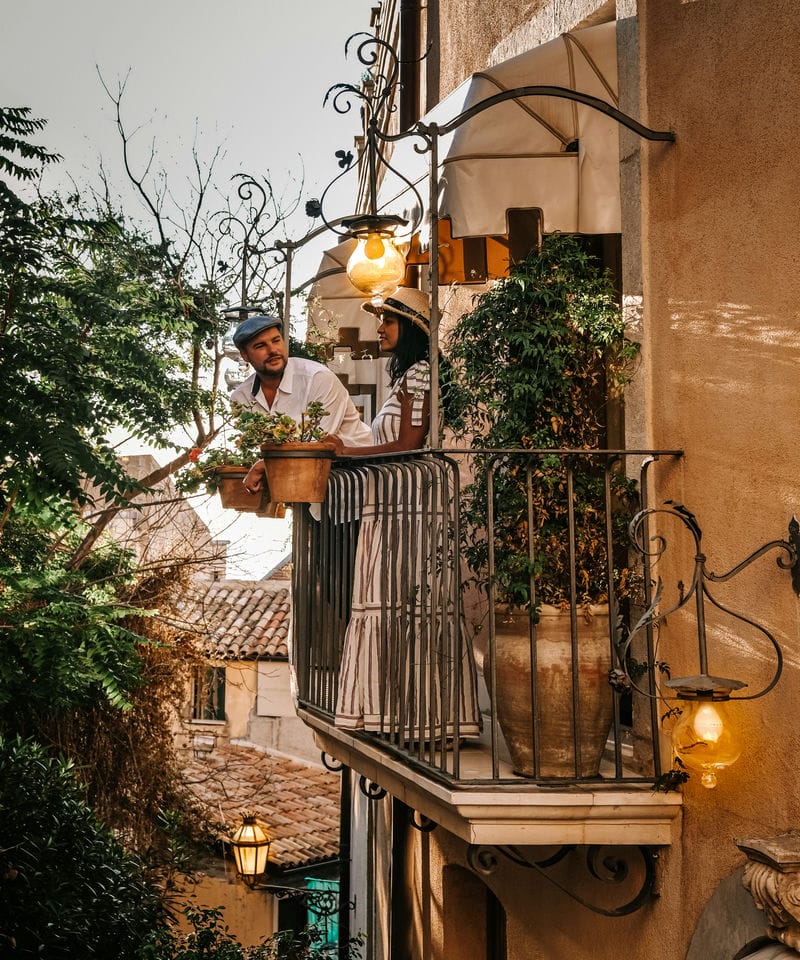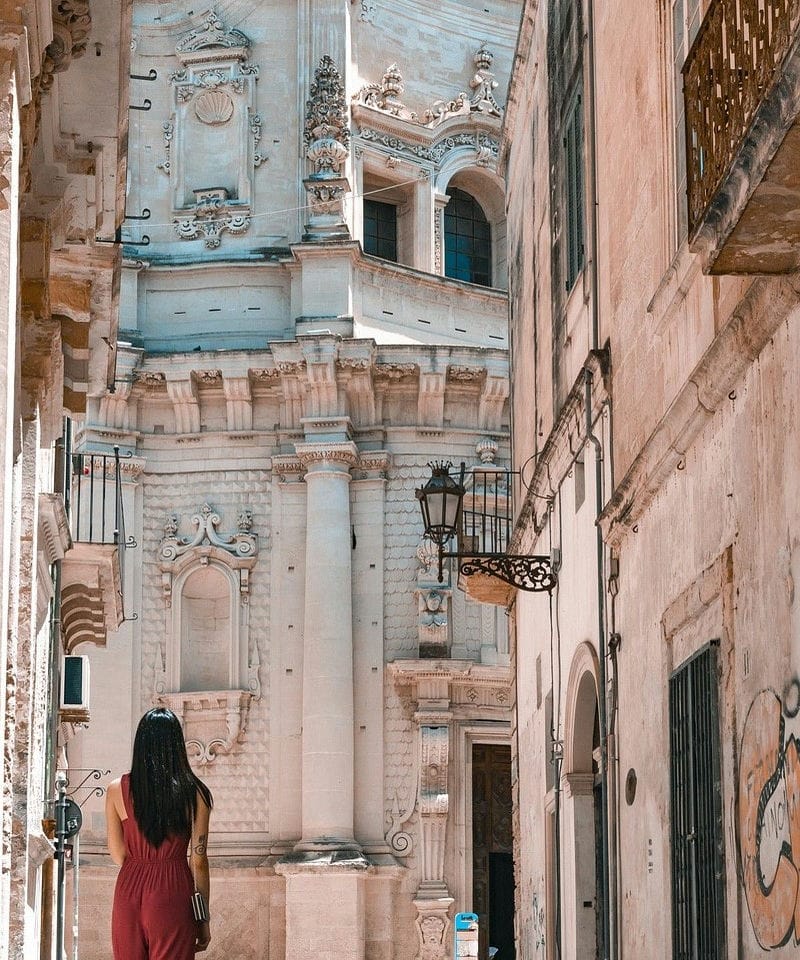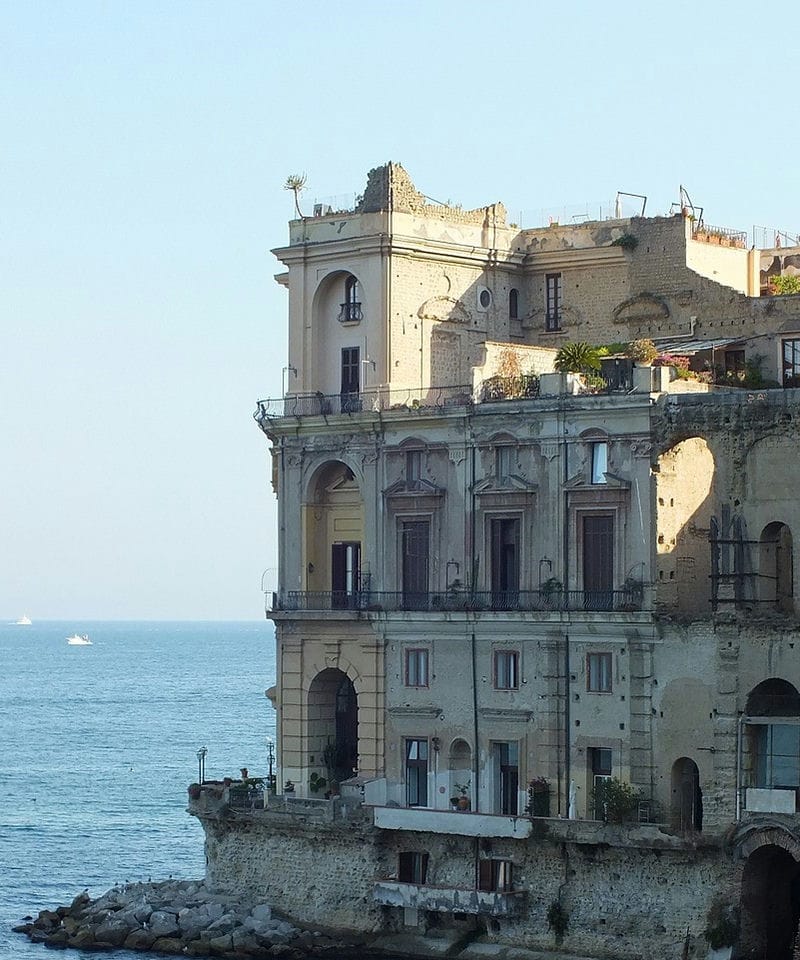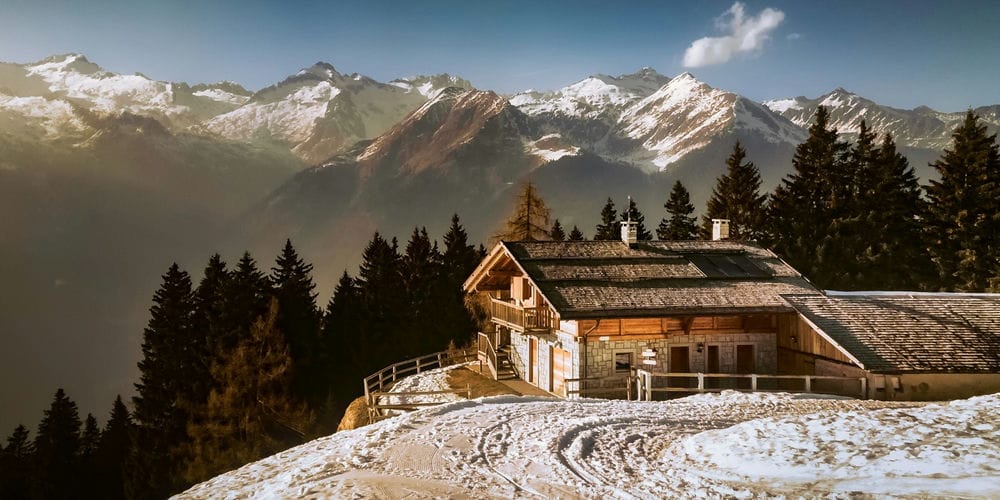
UNESCO World Heritage Sites in Italy: The Go-To Guide
Key Takeaways
- There are more UNESCO World Heritage Sites in Italy than in any other country.
- These sites cover a wide range of cultural and natural wonders.
- Visiting these locations reveals the depth of Italy’s historical and cultural legacy.
- Italy's UNESCO sites span different periods, showcasing a wide range of historical and cultural significance.

Italy is home to more UNESCO World Heritage Sites than any other country in the world, making it a top destination for travelers interested in history, culture, and natural beauty.
The impressive total of 60 Italy UNESCO sites includes ancient ruins, medieval towns, grand cathedrals, and breathtaking landscapes.
These sites showcase the country’s rich past and ongoing cultural significance, encouraging travelers to explore these destinations through well-planned routes that showcase Italy's rich heritage.
Visitors can explore places like Rome’s historic center, the Dolomites, and the unique city of Verona.
Each site tells a story about Italy’s influence in art, architecture, and history through the centuries.
Exploring these sites offers a deeper understanding of why Italian heritage is so valued worldwide.
Why Italy Has So Many UNESCO World Heritage Sites

Italy has almost 60 UNESCO World Heritage Sites, the most of any country as of 2025. These sites cover a wide range of areas, from ancient ruins to famous art and architecture.
Italy’s history spans thousands of years, including times when it was home to the Romans, medieval kingdoms, and Renaissance cities.
This long history led to the creation of many important buildings, artworks, and cultural sites that can still be seen today.
Rome offers famous archaeological sites such as the Colosseum and Roman Forum, which serve as a living museum showcasing the legacy of ancient Rome.
Florence in Tuscany is famous for its Renaissance art and architecture, like the works of the Medici family and buildings decorated with detailed frescoes.
Medieval architecture is visible in cities like Siena and San Gimignano. Their towers, churches, and city walls are well-preserved examples of this period. The landscape was also shaped by aristocratic families who built palaces and villas, adding to the cultural richness of these areas.
Italy is also rich in cultural landscapes such as the rolling hills of Tuscany and the Amalfi Coast. These areas combine natural beauty with centuries of human activity, including farming and winemaking.
A quick look at what makes Italy unique:
|
Feature |
Example |
|---|---|
|
Archaeological Sites |
Colosseum, Pompeii |
|
Renaissance Art |
Florence, Venice |
|
Medieval Architecture |
Siena, San Gimignano |
|
Frescoes |
Sistine Chapel, Padua |
|
Cultural Landscapes |
Tuscany, Amalfi Coast |
|
Medici Family Impact |
Florence palaces |
Each site is protected for its value to human history and culture. This careful preservation is a key reason Italy stands out in the world.
Top UNESCO World Heritage Sites In Italy: Overview

Italy is home to more than 50 UNESCO World Heritage Sites. These notable sites highlight the country’s art, culture, and natural beauty.
Among the most famous are the Historic Centres of major cities.
The Historic Centre of Florence stands out for its Renaissance art and architecture. Visitors can see the Duomo and the Uffizi Gallery in the heart of Tuscany.
Florence is renowned for its significant architectural works, which contribute to its rich cultural heritage.
In the Umbria region, the Historic Centre of Assisi is important for its medieval buildings and the Basilica of San Francesco. Assisi attracts many with its religious history and unique frescoes.
The Historic Centre of Pisa draws crowds with the Leaning Tower, an iconic Italian landmark. Pisa also features Romanesque museums and churches.
Pienza, also in Tuscany, is a hilltop town known as the “Ideal Renaissance Town” for its planned layout. Its streets are well preserved and offer a glimpse into Italian urban design.
Naples, one of Italy’s largest cities, has a vibrant Historic Centre.
This area includes old palaces, churches, and the famous underground catacombs. It reflects centuries of change from Ancient Greece to modern times.
A few other well-known sites include:
- Pompeii and Herculaneum: Ancient cities preserved by volcanic ash.
- The Dolomites: A mountain range with dramatic peaks.
- Botanical Garden of Padua: The world’s oldest academic garden.
|
Site |
Region |
Notable Feature |
|---|---|---|
|
Florence |
Tuscany |
Renaissance art, Duomo |
|
Assisi |
Umbria |
Basilica, medieval structures |
|
Pisa |
Tuscany |
Leaning Tower |
|
Pienza |
Tuscany |
Renaissance urban planning |
|
Naples |
Campania |
Historic palaces, catacombs |
Detailed Profiles Of The Top 10 UNESCO World Heritage Sites In Italy

Italy is home to some of the world’s most celebrated UNESCO World Heritage Sites.
The following locations showcase significant art, history, architecture, and natural beauty across the country.
Vatican City
Vatican City is the world’s smallest independent state and the spiritual center for the Roman Catholic Church.
It is a pivotal location in the Christian world, containing some of the most important religious and artistic treasures on earth.
St. Peter’s Basilica and St. Peter’s Square are highlights, attracting millions each year with their grand Baroque design.
The Vatican Museums hold famous works, including the Sistine Chapel ceiling painted by Michelangelo and Raphael’s Rooms.
The area is a unique blend of Renaissance and Baroque art. Aside from its religious significance, it is also admired for its architecture and gardens.
Access to some areas is restricted, but the main attractions are open to visitors.
The Sassi And The Churches Of Matera
The Sassi are ancient cave dwellings carved into the limestone cliffs of Matera in southern Italy. These homes and churches date back thousands of years and represent a unique way of urban living.
The area consists of two districts: Sasso Barisano and Sasso Caveoso. Both contain a network of stone houses, underground tunnels, and rock churches.
Many of the abandoned caves have been restored and now serve as homes, hotels, and museums.
Matera’s cave churches, part of the Park of the Rupestrian Churches of Matera, hold beautiful medieval frescoes.
In 2019, Matera was named a European Capital of Culture, giving its heritage even more attention. The Sassi show a remarkable story of human adaptation over time.
Historic Centre Of Siena
Siena’s historic center is well-preserved and famous for its medieval layout and Gothic architecture.
The city’s heart is the shell-shaped Piazza del Campo, which is known for the Palio horse race held each summer.
Key sites include the Siena Cathedral, with its striking striped marble design, and the Palazzo Pubblico, which houses many important frescoes.
These architectural works contribute significantly to the artistic and historical value of the city. Narrow winding streets add to Siena’s charm and historic atmosphere.
Siena was a major center of banking and art in the Middle Ages.
Today, it remains a symbol of Tuscan heritage, with its unique cityscape and centuries-old traditions.
Castel Del Monte
Castel del Monte stands alone on a hill in the Apulia region. Built in the 13th century by Emperor Frederick II, this castle is unusual for its striking octagonal shape.
Each of its eight sides is the same length, and it has eight towers, giving the structure a unique geometric harmony.
The exact purpose of the castle remains a mystery, as it lacks common features of other defensive buildings of the time.
Castel del Monte’s structure brings together elements from classical antiquity, the Islamic world, and northern Europe. UNESCO recognizes it for its architectural creativity and symbolism.
Piazza Del Duomo, Florence
The Piazza del Duomo is the main square in Florence and a cornerstone of Renaissance art and architecture.
It is dominated by Santa Maria del Fiore Cathedral, also known as the Duomo, with its massive red-brick dome engineered by Brunelleschi.
Alongside it stand the Baptistery of San Giovanni and Giotto’s Campanile (bell tower).
The square’s buildings showcase intricate marble facades and detailed sculptures.
The area represents the birthplace of modern Western art and is a key site for anyone interested in architecture, history, or religion.
Nearby, the Uffizi Gallery houses masterpieces by Leonardo da Vinci, further emphasizing Florence's rich artistic heritage during the Renaissance.
Pompeii And Herculaneum
Pompeii and Herculaneum are ancient Roman cities near Naples that were buried by the eruption of Mount Vesuvius in AD 79.
Both sites are outdoor museums where visitors can walk ancient streets and step inside Roman homes, temples, and shops.
Many buildings still contain vivid frescoes, mosaics, and household items, providing insight into daily life 2,000 years ago.
Unlike Pompeii, which was buried under ash, Herculaneum was covered by volcanic mud. This helped preserve many wooden objects and buildings.
Together, these sites allow visitors to experience the Roman world firsthand.
Venice And Its Lagoon
Venice, in Northern Italy, is built on more than 100 small islands connected by canals and bridges in the Venetian Lagoon. It is famous for its historic architecture, art, and history.
Highlights include St. Mark’s Square, the Doge’s Palace, the Grand Canal, and the Rialto Bridge. Gothic and Renaissance palaces line the waterways.
Venice evolved into a major maritime power during the 10th century, playing a significant role in controlling a vast trading empire that extended into parts of Greece until the 18th century.
The unique lagoon environment is under threat from rising water levels, but efforts are ongoing to preserve the city’s rich heritage.
The Amalfi Coast
The Amalfi Coast stretches for about 50 kilometers along southern Italy’s Sorrentine Peninsula. It is known for its dramatic cliffs, colorful villages, and beautiful views of the Mediterranean Sea.
The towns of Amalfi, Positano, Ravello, and others are connected by winding roads and steep terraces with lemon groves and vineyards. The coast is dotted with several churches, historic villas, and gardens.
The region has historically attracted artists, writers, and travelers, drawn by its stunning natural beauty, cultural significance, and architectural treasures.
UNESCO recognizes the region for its natural beauty and its importance in Mediterranean history and trade. Hiking paths, scenic drives, and boat tours are popular ways to see the area.
Cinque Terre
Cinque Terre is a group of five villages—Monterosso, Vernazza, Corniglia, Manarola, and Riomaggiore—perched along the rugged Ligurian coastline.
Colorful houses cling to steep cliffs above the sea, surrounded by terraced hillsides covered with vineyards and olive groves.
The area is also renowned for its rich marine life, which plays a crucial role in the region's ecological balance and offers a glimpse into the diverse underwater world.
The villages are connected by walking trails, trains, and boats.
Traditional fishing and farming methods are still practiced here.
Cinque Terre’s unique landscape and vibrant communities attract hikers, photographers, and those seeking local culture and cuisine.
The Historic Centre Of Rome
Rome’s historic center contains ancient ruins, Renaissance palaces, Baroque fountains, and Christian sites, all of which highlight the city's rich history and influence, particularly in relation to ancient Rome.
Key landmarks include:
- The Colosseum
- Roman Forum
- Pantheon
- Piazza Navona
- Trevi Fountain
- Spanish Steps
The city also houses early Christian monuments, churches, and art.
The Historic Centre of Rome features layers of history from the Roman Empire to the Middle Ages and the Renaissance.
Museums and archaeological areas throughout the center help tell the city’s long and complex story.
The area is a living museum, with many buildings still in use today. Its mix of styles and ongoing importance make it one of the most visited heritage sites in Italy.
The Longobards in Italy
Places of the Power (568–774 A.D.) is a UNESCO World Heritage Site that includes seven sites across Italy.
These sites reflect the cultural, architectural, and spiritual influence of the Longobards, a Germanic people who ruled parts of Italy after the fall of the Roman Empire.
The heritage site includes churches, monasteries, and fortresses in cities like Cividale del Friuli, Spoleto, and Benevento.
They are cultural sites, not natural ones, recognized for their unique blend of classical Roman, Christian, and Germanic styles that helped shape early medieval Europe.
UNESCO Natural Sites in Italy

Italy’s natural heritage sites are a testament to the country’s incredible natural diversity.
The Dolomites, a mountain range in northeastern Italy, are a UNESCO World Heritage Site and a popular destination for outdoor enthusiasts.
The Aeolian Islands, located off the coast of Sicily, are another natural UNESCO site, known for their stunning landscapes and unique geological features.
The Amalfi Coast, with its picturesque, great spa towns and crystal-clear waters, is also a UNESCO World Heritage Site and a popular destination for nature lovers.
Italy’s natural heritage sites are protected by international law, and the country is committed to preserving its natural beauty for future generations.
Unique Landmarks in Italy

Italy is home to many unique landmarks, including the Colosseum in Rome, the Leaning Tower of Pisa, and the Grand Canal in Venice. These landmarks are not only iconic symbols of Italy but also important cultural and historical sites.
The Colosseum, for example, is one of the most recognizable landmarks in the world and a testament to the engineering and architectural skills of the ancient Romans.
The Leaning Tower of Pisa, on the other hand, is a unique example of medieval architecture and a popular tourist destination.
Italy’s unique landmarks are a major draw for tourists and a source of national pride.
Botanical Gardens as UNESCO Sites

Italy is also home to several botanical gardens that are recognized as UNESCO World Heritage Sites.
The Botanical Garden of Padua, for example, is one of the oldest botanical gardens in the world and a UNESCO World Heritage Site.
The garden is home to over 6,000 plant species and is an important center for scientific research and conservation.
The Royal Botanic Garden of Naples is another example of a botanical garden that is recognized as a UNESCO World Heritage Site.
These gardens are not only important cultural and historical sites but also play a crucial role in preserving Italy’s natural heritage.
How To Visit UNESCO World Heritage Sites In Italy

Italy has over 50 UNESCO World Heritage Sites, and many are open to the public throughout the year.
As a state party with the highest number of UNESCO sites, Italy demonstrates a strong commitment to cultural and natural heritage.
Travelers can visit sites in cities, the countryside, and coastal areas. Some popular places include Rome, Cinque Terre, Matera, and the historic cities of Florence and Venice.
It is helpful to plan ahead.
Many sites, such as the Colosseum and Pompeii, require entry tickets. Booking online can save time and help avoid long lines.
Public transportation is available to most heritage sites.
Trains and buses connect major cities to places like Pisa, Naples, and La Spezia. Renting a car can be useful for reaching smaller or rural locations.
Tips for Visiting:
- Check the ticket and opening hours information on official websites.
- Respect rules and signs to help protect historic buildings.
- Guided tours are available at many sites, often in several languages.
Below is a sample table of travel options:
|
Site Name |
Region |
Nearest City |
How to Get There |
|---|---|---|---|
|
Colosseum |
Lazio |
Rome |
Metro/bus/walking |
|
Cinque Terre |
Liguria |
La Spezia |
Train/boat/hiking |
|
Sassi di Matera |
Basilicata |
Matera |
Train/bus/car |
|
Pompeii |
Campania |
Naples |
Train/bus/car |
Travelers are encouraged to check local guidelines and any travel restrictions before visiting. This will help make the trip smoother and safer.
The Role Of UNESCO In Preserving Italian Heritage

UNESCO helps protect Italy’s cultural heritage by adding sites to its World Heritage list.
This gives special recognition to places with historical, artistic, or natural importance from different periods, emphasizing the diversity and richness of Italy's heritage.
Being listed as a UNESCO World Heritage Site brings more attention, which encourages Italian authorities and local communities to protect these sites.
This leads to new rules and better funding for conservation.
UNESCO works closely with the Italian government and local groups.
They support training, share best practices, and help plan for long-term preservation.
Some key ways UNESCO helps protect Italian heritage include:
- Monitoring the condition of sites
- Advising on sustainable tourism and development
- Raising international awareness
UNESCO also highlights threats, such as pollution, natural disasters, and mass tourism. It urges action when sites are at risk.
Final Thoughts

In conclusion, Italy’s UNESCO World Heritage Sites are a testament to the country’s rich cultural and natural heritage.
From ancient ruins to breathtaking landscapes, Italy’s UNESCO sites are a major draw for tourists and history enthusiasts.
The country’s commitment to preserving its cultural and natural heritage is evident in its 58 UNESCO World Heritage Sites, which are protected by international law.
Whether you’re interested in history, culture, or nature, Italy’s UNESCO sites have something to offer.
So why not start planning your trip to Italy today and discover the country’s incredible UNESCO World Heritage Sites?
With its unique landmarks, natural heritage sites, and botanical gardens, Italy is a destination that is sure to leave you in awe.













